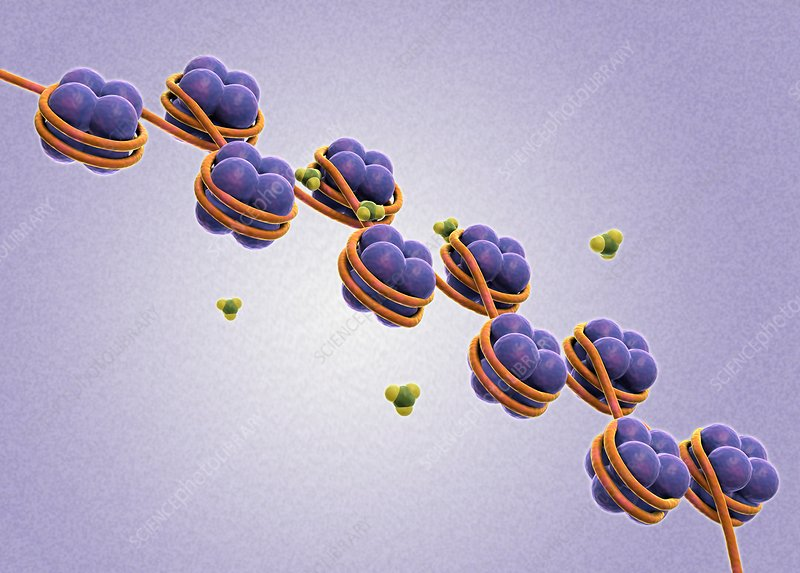
My #Genetics Thread of Threads
1/ Both DNA and RNA are made up of the basic component of nucleotides. Each nucleotide is made up of 3 smaller parts. The fist is the nucleic acid often called the base, the ribose sugar and then the phosphate group. 

2/ The nucleic acids are of 5 types with Adenine, Guanine, Cytosine, Thymine and Uracil. They are dividend in purines with Adenine and Guanine. The purines have 2 rings. The pyrimidines are made up of Uracil, Thymine and Cytosine and have 1 ring. 

3/ Four of them are used in DNA with Adenine (A), Guanine (G), Cytosine (C), and Thymine (T). The are base paired together into A-T and G-C. The A is always with a T and the G is always with a C. The A-T pair shares 2 hydrogen bonds while the G-C pair shares 3 hydrogen bonds. 

4/ The RNA uses four of the nucleic acids with Adenine, Uracil, Guanine and Cytosine. The only difference between RNA and DNA is the T is swapped for a U.
5/ The ribose sugar is the second part of a nucleotide. The ribose is a 5 carbon sugar with the 1 carbon attached to the base and the 5 carbon attached to the Phosphate group. The difference between the ribose of DNA and RNA is the second carbon lacks the OH (hydroxyl) group. 



6/ That is how we know the difference between Deoyxribonucleic Acid (DNA) and Robonucleic Acid (RNA). The second carbon has 1 less Oxygen group making it deoxyribose.
7/ The phosphate group is the exact same in both RNA and DNA. The main one attaches to the 5 prime (5') carbon while the next nucleic acid in the chain attaches to the 3 prime (3') carbon. This makes DNA and RNA run from a 5' to a 3' direction. 

8/ The DNA is double stranded with both strands running in opposite directions called antiparallel. This means one strand runs 5' to 3' and the other runs the exact opposite of 3' to 5'. 

9/ RNA is single stranded since that extra Oxygen on that 2nd carbon would cause static hinderance when trying to bind into double strands. To a certain extent, you can get double stranded RNA as static charges will bind together, but it ends up in a stem and loop structure. 

10/ The last structural concept of DNA is it is wrapped into a helical structure. Since its double stranded, we call it the double helix. 

11/ The double helix structure tends to have one grove that is larger than the other. The larger group is called the major grove and the smaller is called the minor grove. 

12/ Each twist of the helix is about 10 base pairs in length.
13/ This structure puts the bases to the inside as they are electrostatically bound to each other and puts the phosphates to the outside as they are hydrophilic. This protects and makes the DNA slightly negative in electrical charge which is important for packaging on histones.
14/ Histones are DNA packaging proteins. They are made up of an octamer (8) total proteins with 2 H2a, 2 H2b, 2 H3 and 2 H4 proteins in what looks like a spool for thread. The histone has a slight positive charge. 

15/ The DNA wraps twice around each histone complex. The histones, the DNA wrapped around the histones and the small span of DNA linked to the next Histone is called 1 nucleosome. That is the smallest structure of DNA packaging.
16/ The nucleosomes are packaged in a string of beads formation with many histones wrapped twice with the DNA. 

17/ When DNA is tightly packaged for mitosis, we call it a Chromosome, but when its loosely packaged during normal cell function, we call it Chromatin. If the chromatin is unwrapped on the histones, we call it euchromatin. If its more densely packed, we call it heterochromatin. 

18/ There are multiple levels of packaging for which DNA will go through to fit 6 feet of DNA into the tiny nucleus of a cell. They start at the 30 nanometer and go all the way up to the 1400 nanometer which is the chromosome we see in mitosis. 

19/ At the first stage, the nucleosome are bunched up like in a six pack of beer. The empty space it take out. This is the 30 nm packaging. The next level is the DNA is bound in loops onto structural scaffold. This gets you to the 300 nm. Then it supercoils into the 700 nm form.
20/ There are over 3.2 billion nucleotides in the human genome which encodes over 22,000 genes. Its broken down into 23 pairs of chromosomes which you get 1 set from your mom and 1 set from your dad for 46 total chromosome. 

21/ The first 22 chromosomes are called autosomes. The last 2 are the sex chromosomes. Two X chromosome is female and XY is male.
• • •
Missing some Tweet in this thread? You can try to
force a refresh






